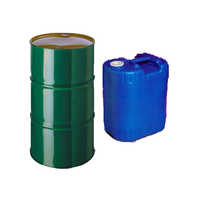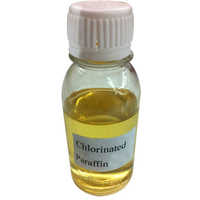Kerosene Oil
(175 products)
Explore More Categories
Eastomax -80 Liquid Kerosene Kinematic Viscosity: 1.65 + 0.05 Volt (V)
Price Trend: 60 - 150 INR (Approx.)/Kilograms
MOQ - 100 Kilograms/Kilograms
Sulphur Content (%) - 0%
Water Content Vol% - 0%
Flash Point - 85 + 2 0C
14 Years
Response Rate: 73.77%
Business Type: Manufacturer | Exporter
UNICORN PETROLEUM INDUSTRIES PVT. LTD.
Made in India
Superior Kerosene Oil Sulphur Content (%): Nil
Price: 70 INR (Approx.)/Liter
MOQ - 100 Liter/Liters
Sulphur Content (%) - Nil
Flash Point - Normal
Water Content Vol% - Nil
1 Years
Business Type: Manufacturer
STANLEE (INDIA) PETROCHEM PRIVATE LIMITED
Pure Kerosene Oil
Price Trend: 46.00 - 48.00 INR (Approx.)/Liter
MOQ - 600 Liter/Liters
Type - Kerosene Oil
5 Years
Business Type: Manufacturer
GR PAHWA ENTERPRISES
Indian Inquiries Only
Kerosene Oil
Price: 460 USD ($) (Approx.)/Metric Ton
MOQ - 20 Metric Ton/Metric Tons
Business Type: Manufacturer | Distributor
ALIYA TRADING S.L
Verified Exporter
( Accepts only Foreign Inquiry)
99% Pure Liquid Form Refined Kerosene Oil For Industrial
Type - Refined Kerosene Oil
Business Type: Supplier | Exporter
SINA GOLDEN LINE GENERAL TRADING LLC
Shambhoo Kerosene Oil
Business Type: Service Provider
Shambhoo & Company
Odorless Kerosene
Price: 48.00 INR (Approx.)/Liter
MOQ - 20000 Liter/Liters
Type - Kerosene Oil
Flash Point - 40
Business Type: Supplier | Exporter
ADARAB PETROCHEM
Electric Forklifts
Business Type: Manufacturer | Distributor
GODREJ & BOYCE MFG. CO.
Deodourised Kerosene
Business Type: Distributor
Premier Industrial Corp
Actually Colorless Like Water Industrial White Kerosene Oil Water Content Vol%: 0 %
Price: 55 INR (Approx.)/Liter
MOQ - 100 Liter/Liters
Type - Oil
Flash Point - 38-52AdegC
Sulphur Content (%) - 5780 parts per million
Business Type: Trading Company
Bansal Traders
White Kerosene
Business Type: Manufacturer | Distributor
LIVE PETROCHEMICALS
1 Liter 1.65+0.05 Volt 0.78 Gram Per Cubic Centimeter Refined Kerosene Char Value: 20
Price: 45 INR (Approx.)/Liter
MOQ - 1100 Liter/Liters
Type - Refined Kerosene
Flash Point - 38 Degree Celsius
Density - 0.78 Gram per cubic centimeter(g/cm3)
Business Type: Trading Company
VENUS ENTERPRISE
Wholesale Price Export Quality Refined Kerosene Oil For Industrial & Domestic Use Density: 0.78I? 0.81 Gram Per Cubic Meter (G/M3)
Price: 80 INR (Approx.)/Liter
MOQ - 3000 Liter/Liters
Type - kerosene
Flash Point - 38-45 C
Density - 0.78i?1/20.81 Gram per cubic meter (g/m3)
Business Type: Distributor | Supplier
Amrjyoti Traders
Aviation Kerosene Colonial Grade 54 Jet Fuel (JP54)
Price: 20 USD ($) (Approx.)/Barrel
MOQ - 100000 Barrel/Barrels
Business Type: Manufacturer | Supplier
ZAO SINTEZ PETROLEUM
White Kerosene Oil
Business Type: Supplier | Trading Company
Kala Mandir & Kala Kunj Co.
Environmentally Friendly Fossil Fuel Effective Heating White Kerosene Oil For Industry Use
Price: 800 INR (Approx.)/Bottle
MOQ - 10 Bottle/Bottles
Char Value - 20
Type - Kerosene Oil
Business Type: Trading Company
Raman Traders
Multicolor Decorative Brass Chafing Dish
MOQ - 5 Piece/Pieces
Business Type: Manufacturer | Supplier
TM EXPORTS
BS-6 New White Fuel Oil (D2)
Flash Point - .25-.40
Business Type: Distributor | Trading Company
Indian Petro Centre
Pure White Kerosene Oil
Business Type: Distributor | Supplier
Bansal Oil
Grease Making Machine
Business Type: Manufacturer | Supplier
Semmathi Engineering
White kerosene Oil
Business Type: Distributor | Supplier
MALIK ENTERPRISES
White Kerosene Oil
Business Type: Supplier | Exporter
Bajaj Alchem Pvt Ltd
Industrial Grade Kerosene Oil
Business Type: Distributor | Supplier
Bansal oil
High Grade Kerosene Oil
Price: 59 INR (Approx.)/Liter
MOQ - 33000 Liter/Liters
Flash Point - 46
Type - Industrial Kerosene
Business Type: Manufacturer | Distributor
Kommon IT Services
White Kerosene Oil
Business Type: Distributor | Supplier
Malik Interprises
MONEFTEGAS Kerosene Oil
Business Type: Manufacturer | Exporter
MONEFTEGAS AND OIL LLC
Refined Kerosene Oil 1 Litre
MOQ - 1000 Metric Ton/Metric Tons
Business Type: Manufacturer | Exporter
Sirjangostar Global Group
Indian Kerosene Oil
Business Type: Manufacturer | Supplier
Indian Oil Corporation Ltd
Kerosene Oil Manufacturers | Suppliers in India
| Company Name | Location | Member Since |
|---|---|---|
| Unicorn Petroleum Industries Pvt. Ltd. | Mumbai, India | 14 Years |
| Gr Pahwa Enterprises | Ludhiana, India | 5 Years |
| Stanlee (India) Petrochem Private Limited | Delhi, India | 1 Years |
What is Kerosene Oil?
Interesting Facts About Kerosene
Advantages and Disadvantages of Kerosene
Benefits of Kerosene Oil
FAQs: Kerosene Oil
Related Categories
Base Oils
Batteries
Battery Management Systems
Biofuel
Biogas
Bitumen
Charcoal
Coal & Coke
Coal Gas
Compressed Natural Gas
Crude Oil
Energy Agents
Energy Conservation Products
Energy Management System
Energy Saving Devices
Fuel Oil
Graphite
Industrial Batteries
Inverters & Ups Equipment
Kerosene Oil
Lubrication System & Equipment
Natural Gas
Oil & Gas Field Machinery & Equipment
Oil & Lubricants
Paraffin Wax
Petrochemical Products
Power & Energy Measurement Equipments
Solar Panels
Solar Products & Equipment
Turbine


